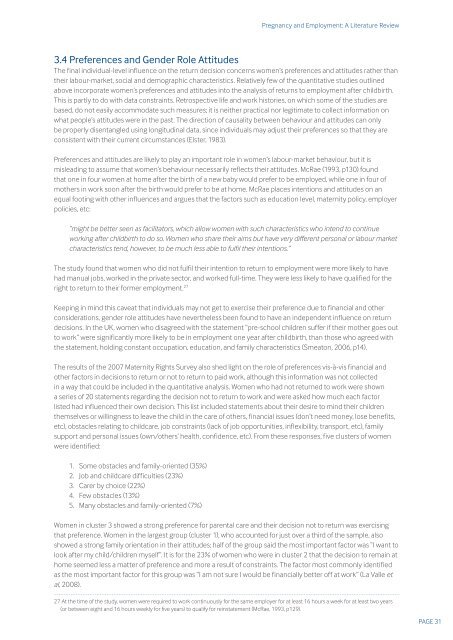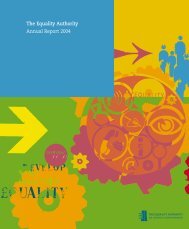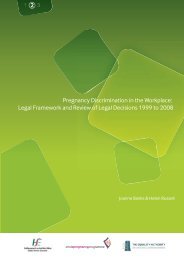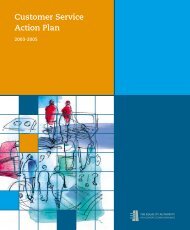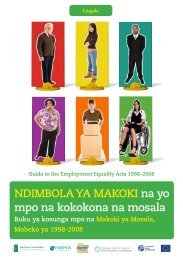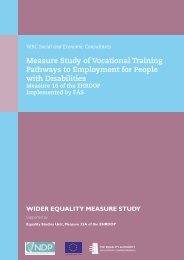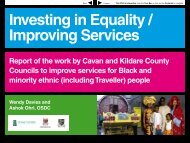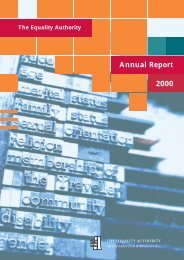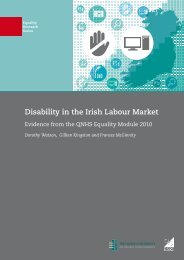Pregnancy and Employment: A Literature Review - Crisis Pregnancy ...
Pregnancy and Employment: A Literature Review - Crisis Pregnancy ...
Pregnancy and Employment: A Literature Review - Crisis Pregnancy ...
Create successful ePaper yourself
Turn your PDF publications into a flip-book with our unique Google optimized e-Paper software.
<strong>Pregnancy</strong> <strong>and</strong> <strong>Employment</strong>: A <strong>Literature</strong> <strong>Review</strong><br />
3.4 Preferences <strong>and</strong> Gender Role Attitudes<br />
The final individual-level influence on the return decision concerns women’s preferences <strong>and</strong> attitudes rather than<br />
their labour-market, social <strong>and</strong> demographic characteristics. Relatively few of the quantitative studies outlined<br />
above incorporate women’s preferences <strong>and</strong> attitudes into the analysis of returns to employment after childbirth.<br />
This is partly to do with data constraints. Retrospective life <strong>and</strong> work histories, on which some of the studies are<br />
based, do not easily accommodate such measures; it is neither practical nor legitimate to collect information on<br />
what people’s attitudes were in the past. The direction of causality between behaviour <strong>and</strong> attitudes can only<br />
be properly disentangled using longitudinal data, since individuals may adjust their preferences so that they are<br />
consistent with their current circumstances (Elster, 1983).<br />
Preferences <strong>and</strong> attitudes are likely to play an important role in women’s labour-market behaviour, but it is<br />
misleading to assume that women’s behaviour necessarily reflects their attitudes. McRae (1993, p130) found<br />
that one in four women at home after the birth of a new baby would prefer to be employed, while one in four of<br />
mothers in work soon after the birth would prefer to be at home. McRae places intentions <strong>and</strong> attitudes on an<br />
equal footing with other influences <strong>and</strong> argues that the factors such as education level, maternity policy, employer<br />
policies, etc:<br />
“might be better seen as facilitators, which allow women with such characteristics who intend to continue<br />
working after childbirth to do so. Women who share their aims but have very different personal or labour market<br />
characteristics tend, however, to be much less able to fulfil their intentions.”<br />
The study found that women who did not fulfil their intention to return to employment were more likely to have<br />
had manual jobs, worked in the private sector, <strong>and</strong> worked full-time. They were less likely to have qualified for the<br />
right to return to their former employment. 27<br />
Keeping in mind this caveat that individuals may not get to exercise their preference due to financial <strong>and</strong> other<br />
considerations, gender role attitudes have nevertheless been found to have an independent influence on return<br />
decisions. In the UK, women who disagreed with the statement “pre-school children suffer if their mother goes out<br />
to work” were significantly more likely to be in employment one year after childbirth, than those who agreed with<br />
the statement, holding constant occupation, education, <strong>and</strong> family characteristics (Smeaton, 2006, p14).<br />
The results of the 2007 Maternity Rights Survey also shed light on the role of preferences vis-à-vis financial <strong>and</strong><br />
other factors in decisions to return or not to return to paid work, although this information was not collected<br />
in a way that could be included in the quantitative analysis. Women who had not returned to work were shown<br />
a series of 20 statements regarding the decision not to return to work <strong>and</strong> were asked how much each factor<br />
listed had influenced their own decision. This list included statements about their desire to mind their children<br />
themselves or willingness to leave the child in the care of others, financial issues (don’t need money, lose benefits,<br />
etc), obstacles relating to childcare, job constraints (lack of job opportunities, inflexibility, transport, etc), family<br />
support <strong>and</strong> personal issues (own/others’ health, confidence, etc). From these responses, five clusters of women<br />
were identified:<br />
1. Some obstacles <strong>and</strong> family-oriented (35%)<br />
2. Job <strong>and</strong> childcare difficulties (23%)<br />
3. Carer by choice (22%)<br />
4. Few obstacles (13%)<br />
5. Many obstacles <strong>and</strong> family-oriented (7%)<br />
Women in cluster 3 showed a strong preference for parental care <strong>and</strong> their decision not to return was exercising<br />
that preference. Women in the largest group (cluster 1), who accounted for just over a third of the sample, also<br />
showed a strong family orientation in their attitudes; half of the group said the most important factor was “I want to<br />
look after my child/children myself”. It is for the 23% of women who were in cluster 2 that the decision to remain at<br />
home seemed less a matter of preference <strong>and</strong> more a result of constraints. The factor most commonly identified<br />
as the most important factor for this group was “I am not sure I would be financially better off at work” (La Valle et<br />
al, 2008).<br />
27 At the time of the study, women were required to work continuously for the same employer for at least 16 hours a week for at least two years<br />
(or between eight <strong>and</strong> 16 hours weekly for five years) to qualify for reinstatement (McRae, 1993, p129).<br />
PAGE 31


